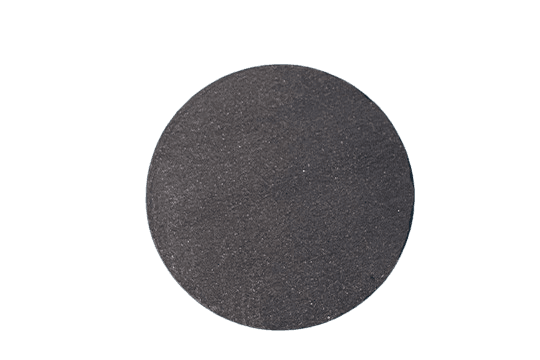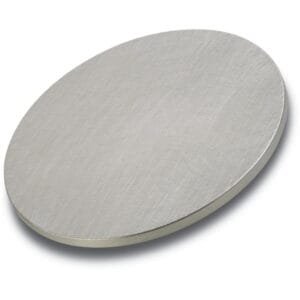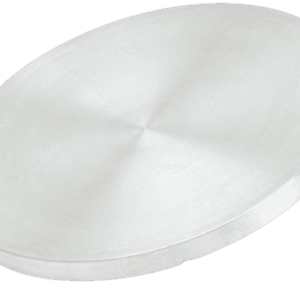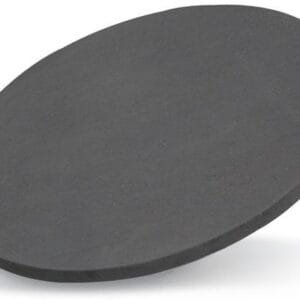| Material Type | Calcium Phosphate Tribasic |
| Symbol | (Ca10 (OH)2 (PO4)6) |
| Color/Appearance | Crystalline |
| Melting Point (°C) | 1100 |
| Density | N/A |
| Molecular Weight | 502.31 |
| Sputter | |
| Exact Mass | 501.675955 |
Low Repeat Rate Calcium Phosphate Tribasic Sputtering Targets
The monophasic Ca₁₀(PO₄)₆(OH)₂ samples are synthesized through calcination of precursor gels at 1000 °C for 5 hours. The phase transformations, composition, and microstructural characteristics of the resulting polycrystalline samples are analyzed using various thermoanalytical methods (TGA/DTA), infrared spectroscopy (IR), X-ray powder diffraction (XRD), and scanning electron microscopy (SEM). The study demonstrates that the morphology of the ceramic samples can be tailored by modifying the type of complexing agent used in the aqueous sol-gel process.
Calcium Phosphate Tribasic Sputtering Targets Information
- Purity: 99.99%
- Circular Targets: Diameter ≤ 14 inches, Thickness ≥ 1mm
- Block Targets: Length ≤ 32 inches, Width ≤ 12 inches, Thickness ≥ 1mm
More Information on Calcium Phosphate Tribasic Sputtering Targets
Applications
- Ferroelectric
- Gate Dielectric
- CMOS (Complementary Metal-Oxide-Semiconductor)
Features
- High Purity: Ensures superior material quality for demanding applications.
- Custom Sizes: Available to meet specific customer requirements.
Manufacturing Process
- Production: Cold pressed and sintered with elastomer bonding to the backing plate.
- Cleaning & Packaging: Thoroughly cleaned for vacuum use and protected from environmental contaminants during shipment.
Options
- 99.99% Purity: Guaranteed minimum purity for enhanced performance.
- Custom Sizes: Smaller sizes available for research and development (R&D) applications.
- Sputtering Target Bonding Service: Available to ensure optimal adhesion and performance in sputtering systems.





Reviews
There are no reviews yet.